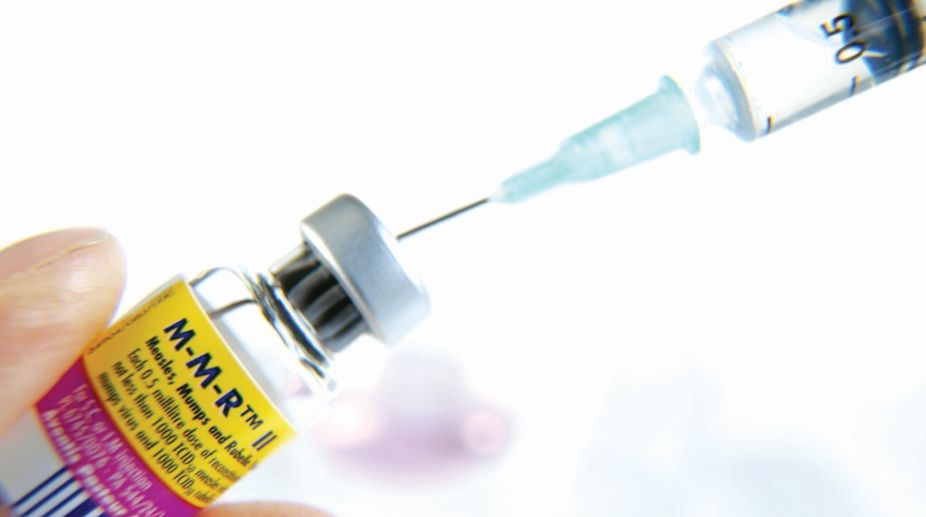Exercise, not just diet, can change gut bacteria
The research provides clues to how exercise could benefit people suffering from inflammatory bowel disease.
Antigens induce an immune response in the body, especially the production of antibodies

Antigens
The name antigens (from the Greek, anti for against and genos for genus) is given to organic substances of a colloid structure (proteins and different protein complexes in combination with lipids or polysaccharides), which upon injection into the body are capable of causing the production of antibodies and reacting specifically with them.
Antigens, consequently, are characterised by these properties — the ability to cause the production of antibodies (antigenicity) and the ability to enter into an interaction with the corresponding antibodies (antigenic specificity).
Antigenic substances are highly molecular compounds. They have certain properties — a specific action, heterogenicity for the body, a colloid structure, and solubility in body fluids. The breakdown of proteins to peptones, amino acids and also a deep denaturation by physicochemical effects bring about a loss of antigenic ability, while the introduction of various radicals into the protein molecule causes the loss of species specificity.
Advertisement
Substances composed of levorotatory amino acid isomers induce antibody production, while complexes of dextrorotatory amino acid isomers are devoid of antigenic functions.
Antigenic properties are pertinent to toxins of a plant origin (ricin, robin, abrin, cortin, et al), toxins of an animal origin (toxins of snakes, spiders, scorpions, phalangia, karakurts, bees), enzymes, native foreign proteins, various cellular elements of tissues and organs, bacteria and their toxins, rickettsiae and viruses.
Not all substances (proteins and protein complexes in combination with lipids and polysaccharides) are characterised by having antigens with similar properties. There are complete and partial antigens.
Complete antigens are substances, which cause the production of antibodies in the body, and react with them in vivo as well as in vitro (foreign proteins, sera, bacteria, toxins, rickettsiae, viruses and cellular elements).
On the other hand, partial antigens are known as haptens, which do not cause the production of antibodies, but can react with them. Haptens include lipids, complex carbohydrates and other substances. The addition of proteins to haptens even in a small amount gives them the properties of complete antigens. In this case the protein carries out the function of a conductor.
It is well known that the properties of chemical, structural and functional specificity are inherent in all natural proteins. Proteins of different species of animals, plants, bacteria, rickettsiae and viruses can be differentiated by immunological reactions. The antigenic function of bacteria, rickettsiae and viruses is characterised not only by species, but also by type specificity.
The immunological specificity of antigens is linked with a determinant group found on the surface of the antigen as one or more active areas. The determinant group may be isolated in a relatively pure form, which makes it possible to improve the efficacy of vaccinal preparations significantly.
Besides, inside each species of microbe there is a different amount of types, which also have specific antigenic properties. Type specificity is associated with the presence of special polysaccharide complexes in the microbial cell.
Besides species and type specificity group (generic) antigens have been revealed in closely related species. The presence of group antigens reflects the historical process of their development and genetic links.
When the antigenic structures of the host are similar to those of the causative agent, the micro-organism is incapable of producing immunity, as the result of which the disease follows a graver course. It is possible that in individual cases the carrier state and inefficacy of vaccination are due to the common character of the microbial antigens and the antigens of the person’s cells.
It has been established that human erythrocytes have antigens in common with staphylococci, streptococci; organisms of plague, E coli, Salmonella paratyphi, Shigella organisms, smallpox and influenza viruses, and other causative agents of infectious diseases. Such a condition is called antigenic mimicry.
In 1911, D Forssman established that there are heterogenic or hetero-logic antigens (haptens) found in different species of animals (guinea pigs, dogs, cats, horses, chickens, fish and turtles).
If a rabbit is immunised with an emulsion from the organs of guinea pigs, then antibodies appear in the serum of the rabbit, which react not only with the emulsion of these organs but also with sheep erythrocytes. Thus, in the organs of the guinea pig and sheep erythrocytes, there is a heterogenic antigen.
It has been proven that the nonspecific properties of Forssman’s heterogenic antigen are associated with the presence of lipid or polysaccharide fractions closely related in composition, which bear common properties in different species of animals, plants and microbes.
Antigenic properties of bacteria, toxins, rickettsiae and viruses, used in the practice of reproducing artificial immunity against infectious diseases, are of most practical importance.
The writer is associate professor, head, department of botany, ananda mohan
college, kolkata, and also fellow, botanical society of bengal, and can be contacted at tapanmaitra59@yahoo.co.in
Advertisement